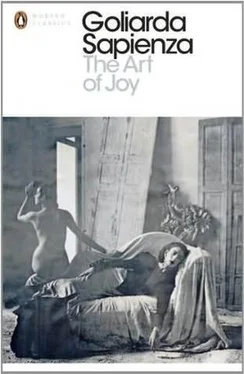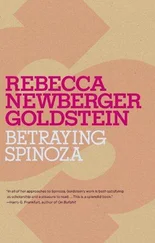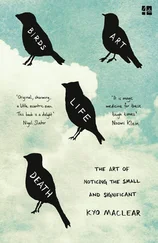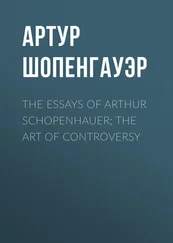It was done. I held in my hand — a true miracle indeed — something that would enable me not to lose my vocation, but to change it as I pleased.
* * *
‘So, my dear girl, from what I heard, your Mother Leonora appeared to you and you wish to sacrifice your vocation to devote yourself to our family?’
The voice that had been silent for so long was now booming again, more terrifying than the thunder and rain that had continued unabated outside. If only Beatrice were there! This time I was alone with the Princess. Her mocking grey eyes held my gaze, as mine tried vainly to look away.
‘Well, answer me! It’s true you’re quite pretty when you get worked up! Too bad it only happens once in a blue moon! Answer! Do you think I care about your vocation? If you must know: in this house we believe in God, but very, very little in priests and nuns. Then too, if this can reassure you, I’m glad to know that when I die — I’m old now and although the idea of death doesn’t thrill me, every so often I have to think about it. What a shame to have to die! What was I saying? Ah, yes, I’m glad to know that Cavallina and that ‘thing’ up there will not end up in the care of servants, but someone who, though taken in, is still part of the family, for better or for worse. Can’t you speak? All right then! Answer me this at least: have you meditated seriously about the decision you’ve made? This isn’t just a passing storm, is it? You’re happy here? You won’t regret leaving the convent, afterwards? You’re young! Think before you answer, because you see, my girl, I won’t tolerate whining women. Afterwards, you won’t be able to complain. Do you understand? It’s true you haven’t complained these past months and you haven’t gone around snivelling, but you never know with you women! It’s better to be clear up front. Patti chiari e inimicizia eterna , clear understandings breed eternal animosity. 21Well, answer me!’
‘I’ve meditated, madam Princess. My place is here.’
‘Fine. Tomorrow I shall write to those withered old ladies who’ve lost you, and have them send back the dowry and trousseau. I want to write a nice, polite letter and laugh, thinking of the disappointment and rage each line will cause Mother Costanza. I’ll make them send back every last thing. Then, with the trousseau we’ll have some ball gowns made for you. Because, see here, my girl, let’s be clear: if you must sacrifice yourself, don’t let it show. To begin with, tomorrow when the dance teacher comes for Cavallina, you too will take lessons. The waltz, the mazurka, the quadrille and all the rest! If you’ve made up your mind, you must learn to dance and to smile, because sourpusses and graceless bumblers really get on my nerves. Understood? Now off with you. I have to write a little line or two to Mother Costanza.’
Not expecting anything further, I started to run off to Beatrice. But when I was at the door, she added: ‘Oh! You’ll also have to learn to ride a horse … and we must see to that damned name of yours, my girl!’
* * *
My slim waist clinched by a corset, my breasts free, clasped only by a flimsy lace brassiere, I advanced toward Beatrice who was acting as my cavalier in that complicated quadrille of curtsies and glancing embraces, twists and turns. Whether it was the magic of the corset that helped me stand erect, or the patent-leather boots, glossier than the marble floor, I was really much taller than Beatrice. And when she held me around the waist as the teacher changed the rhythm at the piano — one-two-three, one-two-three for the waltz — I went flying around the great hall, surrounded only by empty and waiting chairs and sofas. ‘Now, counterpoint! Turn!’ Nimbly, Beatrice twirled around. She was incredible: when she danced, her limp nearly disappeared, and her strong hands held me firmly as I spun around the walls, the drapes, the chandeliers.
‘Oh, signorine , what a delight it is to the eyes to look at you: two angels, I swear to God! Two angels embracing as they soar up, up into the clouds! It was time the Principessina had a partner! No, no, it’s your turn now, Signorina Modesta, you’re already proficient at being led. Come, it’s your turn now to be the cavalier! Don’t be afraid. Beatrice will guide you by letting herself be led. Don’t worry, that’s always the way. I swear to God, the pattern never changes: the lady pretends she’s being led while instead she leads, leads, leads … There, that’s it! Excellent! Turn, twirl, twirl. Bravo! Bravo! Bravo! What more can I say…’
That small instructor, smaller than Beatrice, though not old, was slight and smiling and curiously honed. Maybe because he had neither whiskers nor a moustache? On the other hand, he wore numerous rings and his pink fingernails seemed polished. When he arrived, all the women whispered and laughed together. If he approached to correct the placement of a hand, Beatrice stroked the black curls, slick with sweat and perfume, that tumbled over his temples when he ran over to us from the piano.
‘Oh, come on, Modesta, don’t you get it? It’s not because he’s a dancer or has to be able to dance the part of a man or a woman … Or that may be partly it. How astute you are! But be that as it may, it’s that he’s a woman like us. Can’t you see that tiny waist? Just think! He doesn’t even wear a corset! What fun it would be if we could put a corset on him…’
By now we were laughing together, and he, impassioned by our joy, instructed:
‘No, no, Signorina Modesta, not so heavy! She’s the cavalier who’s leading now … Lightly, lightly, lightness, femininity! There, that’s it, don’t cling to the Principessina ’s shoulders as if you were afraid of falling into a ravine. A lady, believe me, is not afraid of her cavalier; she knows that with a light touch … there, like that … such a lovely hand! it will be she who leads her partner. How I envy him! Then up, up into paradise … in three beats: one-two-three, one-two-three, one-two…’
We laughed in three beats: one-two-three …
‘Now, both of you, without missing a beat, kindly take me round the waist … That’s the way. And now, the grand finale, the galop. Ready? Go!’
We were so good — according to Argentovivo — that often one of the legion of maids would come to watch us from behind the glass doors. One day even the Princess deigned to attend a lesson to observe my progress. After ten minutes she stood up, and going through the door shouted, ‘Fine, fine. Excellent, girls! Just look at that: three Graces without a cavalier! I’m going. The accounts await me. You three, make the best of it.’
She spoke so loudly that all three of us stopped, not daring even to look at each other. The thud of the door made us jump. The Princess was always slamming the door. The instructor, white as a sheet, was moving toward the piano where the young lady had stopped playing, when the door opened again.
‘You made me lose my train of thought. I had come for a specific reason and you three with those leaps and twirls … Oh, yes! Mody, when you’re done with this little party, I’ll expect you in my study. I have a thing or two to tell you. And you, why are you standing there? Do you or do you not intend to make this lesson productive? Note that I pay you handsomely and I don’t like to have my girls’ time wasted. Go on, hop to it!’
The instructor hastily gave orders to restart the waltz, and Beatrice had already taken hold of my waist, but my legs wouldn’t support me and I let myself be pulled along by her … She had a thing or two to tell me. What could be wrong? Had I been laughing too much? Had I shown too much interest in the dressmaker? Had I spent too much time with Ippolito? Or was it the accounts? Had I bungled the accounts? Dragging my legs, which did not want to move, I knocked on the door.
Читать дальше











